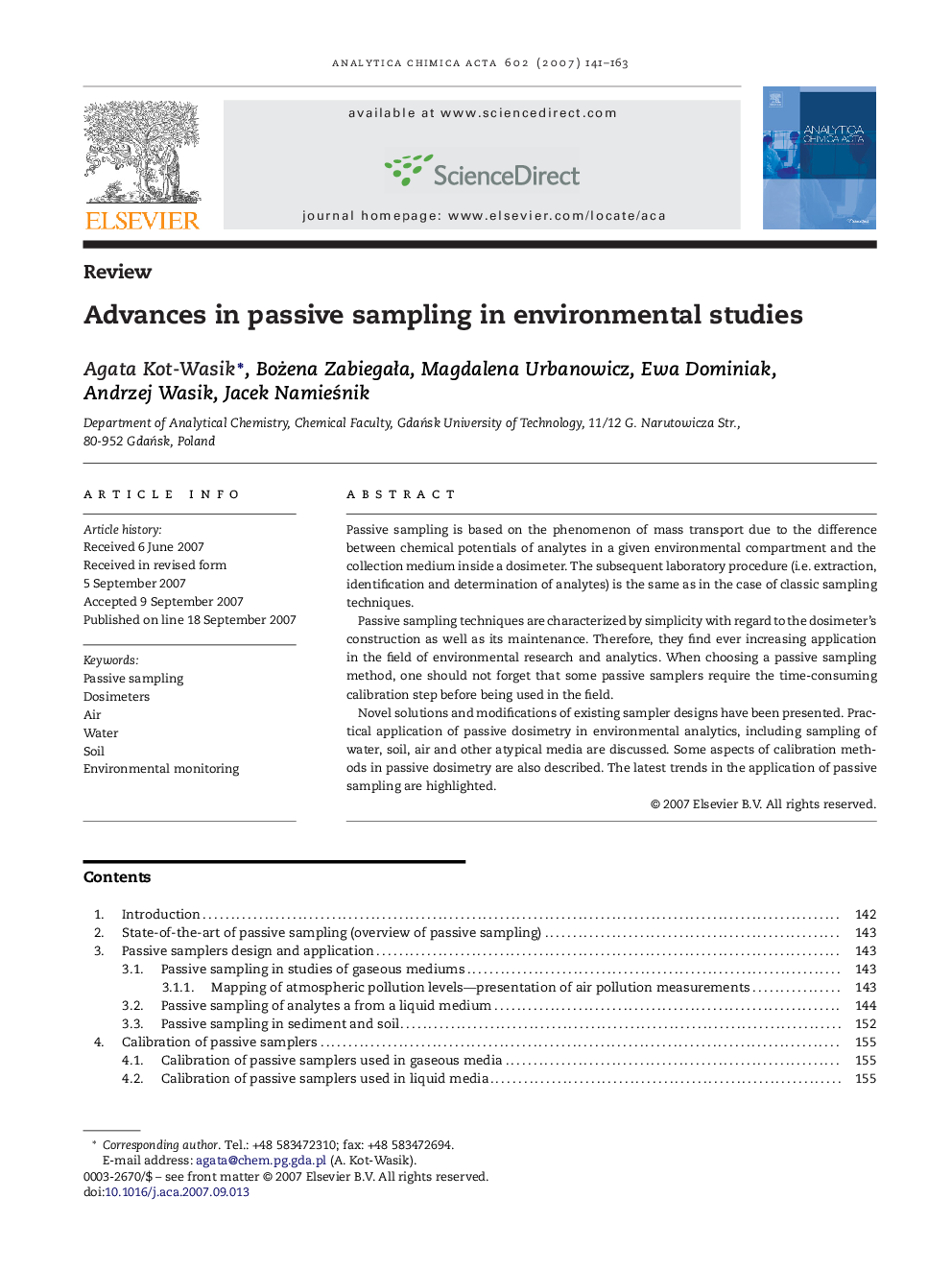| Article ID | Journal | Published Year | Pages | File Type |
|---|---|---|---|---|
| 1169597 | Analytica Chimica Acta | 2007 | 23 Pages |
Passive sampling is based on the phenomenon of mass transport due to the difference between chemical potentials of analytes in a given environmental compartment and the collection medium inside a dosimeter. The subsequent laboratory procedure (i.e. extraction, identification and determination of analytes) is the same as in the case of classic sampling techniques.Passive sampling techniques are characterized by simplicity with regard to the dosimeter's construction as well as its maintenance. Therefore, they find ever increasing application in the field of environmental research and analytics. When choosing a passive sampling method, one should not forget that some passive samplers require the time-consuming calibration step before being used in the field.Novel solutions and modifications of existing sampler designs have been presented. Practical application of passive dosimetry in environmental analytics, including sampling of water, soil, air and other atypical media are discussed. Some aspects of calibration methods in passive dosimetry are also described. The latest trends in the application of passive sampling are highlighted.
